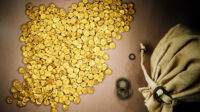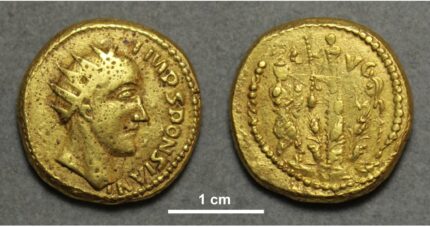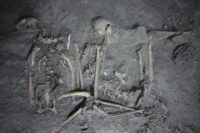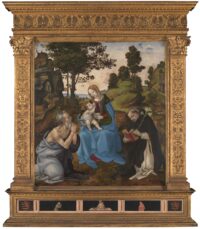 A hoard of Celtic gold coins from the 1st century B.C. was stolen in a daring smash-and-grab burglary from the Celtic and Roman Museum in Manching, southern Germany. Thieves made away with 483 coins in the early hours of Tuesday, November 22, and Bavaria’s State Criminal Police Office have launched an international investigation to find the perpetrators and the treasure they stole.
A hoard of Celtic gold coins from the 1st century B.C. was stolen in a daring smash-and-grab burglary from the Celtic and Roman Museum in Manching, southern Germany. Thieves made away with 483 coins in the early hours of Tuesday, November 22, and Bavaria’s State Criminal Police Office have launched an international investigation to find the perpetrators and the treasure they stole.
At 1:17 AM, several fiber optic lines were cut at a telecom hub a kilometer away from the museum, severing internet and telephone service to 13,000 homes and businesses in Manching, including at the Celtic and Roman Museum. This also cut off the alarm linking the museum’s security system to the police. Exactly nine minutes later at 1:26 AM, an emergency exit at the museum was pried open and two display cases made of bulletproof safety glass were broken into. At 1:33 AM, the thieves disappeared into the night with the entire hoard of gold coins. Nobody noticed the loss until the museum staff arrived for the work day. Police were alerted and arrived around 9:45 AM.
The largest Celtic gold find to appear in the 20th century, the hoard was discovered in 1999 years ago at the site of an ancient Celtic settlement in Manching. Found in a sack buried under the foundations of a building, the bowl-shaped coins were struck from Bohemian river gold, evidence of how Iron Age Manching was connected to trade networks in central Europe.
It has been on display at the museum since 2006 and is its flagship attraction. The authorities fear that in its original form, the coin hoard will be impossible for the thieves to sell, and that even though their historical value tops 1.6 million euros, the coins will be melted down to sell for their mere gold value. Each coins weighs 7.3 grams for a total hoard weight of about four kilos, which at current prices would be worth about 250,000 euros.
Because of the delay in discovery of the theft, police missed crucial hours of investigations. There are now dozens of investigators working on the case.
[Guido Limmer, the deputy head of Bavaria’s State Criminal Police Office] said there were “parallels” between the heist in Manching and the theft of priceless jewels in Dresden and a large gold coin in Berlin in recent years. Both have been blamed on a Berlin-based crime family.
“Whether there’s a link we can’t say,” he added. “Only this much: we are in touch with colleagues to investigate all possible angles.”
Bavaria’s minister of science and arts, Markus Blume, said evidence pointed to the work of professionals.
“It’s clear that you don’t simply march into a museum and take this treasure with you,” he told public broadcaster BR. “It’s highly secured and as such there’s a suspicion that we’re rather dealing with a case of organized crime.” […]
Limmer, the deputy police chief, said Interpol and Europol have already been alerted to the coins’ theft and a 20-strong special investigations unit, codenamed ‘Oppidum’ after the Latin term for a Celtic settlement, has been established to track down the culprits.


